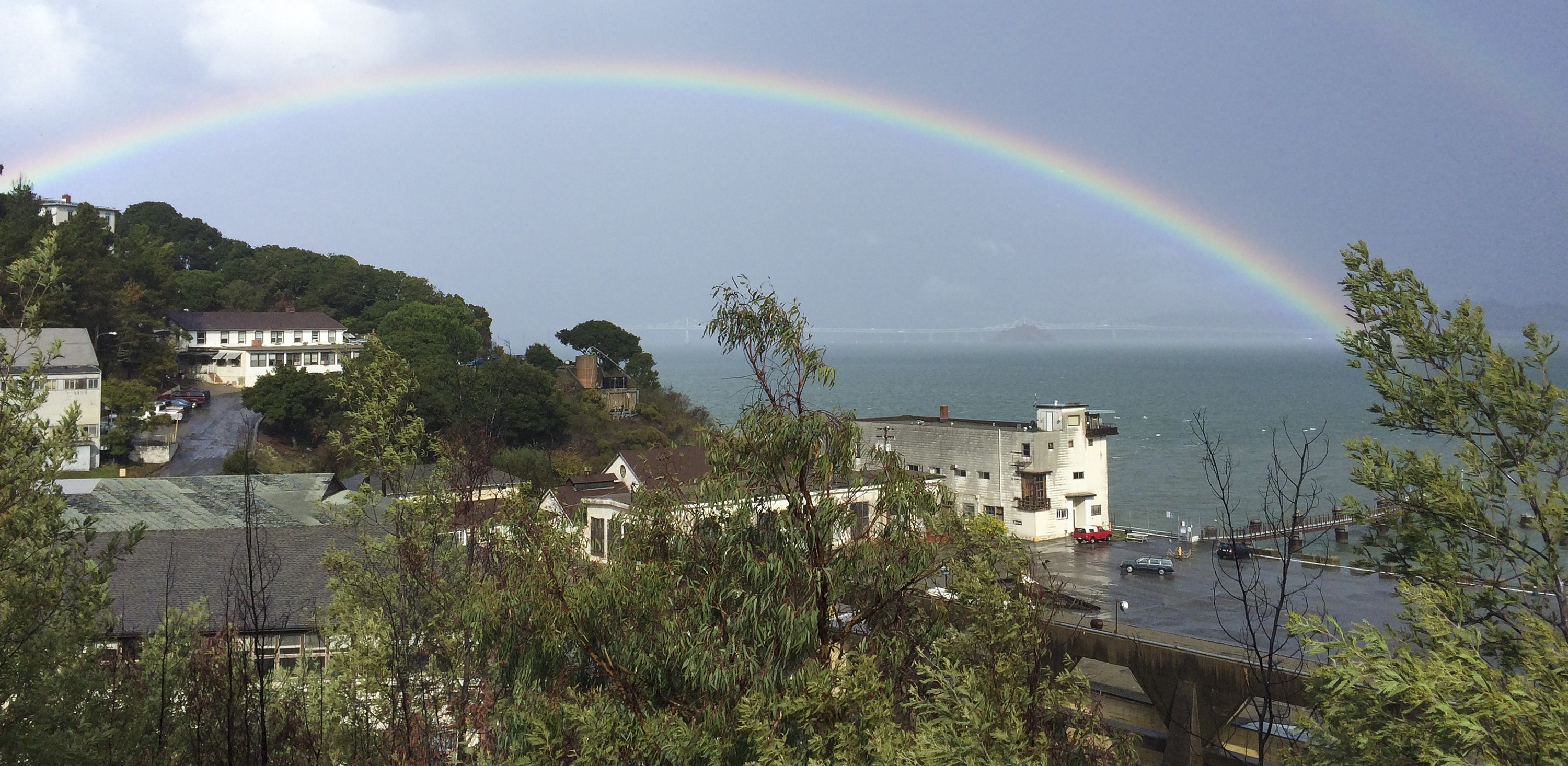Climate change resilience can be defined as "the capacity to prepare for changing conditions, to endure and recover rapidly from disruptions, and to adapt to climate change events, especially when those adaptation strategies substantially reduce greenhouse gas emissions". Planning for resiliency means to clearly define the strengths we already have and what vulnerabilities to address, while taking an intersectional approach that integrates the economic, social, and environmental dimensions of our campus and community.
The need for academic institutions, municipalities, counties, states, and federal agencies to increase resilience to extreme weather events and a changing climate is strikingly evident amongst the communities across California. Recent events such as severe wildfires, high winds, poor air quality, extended heat waves, extreme precipitation events, and longer droughts have reinforced this urgency and compelled leading communities like San Francisco State University to proactively collaborate on the planning and develop actions that mitigate rick and enhance resilience.
In April 2022, SF State partnered with Second Nature and The Nature Conservancy on collaboratively launching a community-based process to asses extreme weather and climate change impacts, and to generate and prioritize solutions that improve resiliency, sustainability, and equity for their community. From this workshop came the Climate Action & Resiliency Report.
Current Strengths and Assets
- SF State serves as a nexus between the student body and surrounding neighborhoods with growing awareness of opportunities to strengthen the social infrastructure and create feedback mechanisms for SF State to be more responsive.
- Long-standing culture of inclusion at SF State with resources that support a diverse student and staff community coupled with a growing recognition that students are their communities' voices on campus.
- Pandemic resulted in greater resilience in educational delivery methods and approaches via technology and online teaching techniques.
- Hybrid workdays and telecommute schedules for faculty and staff reduces the number of vehicles on street in and around campus and has been shown to increase work productivity.
- Food+Shelter+Success provides basic needs on an ongoing basis, which can provide emergency housing and food to students during climate emergency situations.
- Our new buildings, like our new Science building, are being built with renewable energy microgrid to replace diesel generators for emergency power.
- We are currently building two on-campus residence halls to further strengthen our community.
- Checkout the California State University Climate Resilience Framework, which outlines the resilience plan for the whole CSU system.

Climate Hazards & Impacts
Main Hazards for SF State Campuses: Holloway, Tiburon, Sierra Nevada
- Severe droughts
- Wildfires and its impacts on air quality
- Extreme precipitation events resulting in flooding
Additional Hazards for Tiburon Campus
- Sea level rise increasing coastal erosion
- Landslides
Additional Hazards for Sierra Nevada Campus
- Extreme temperatures
Check out San Francisco's Hazards and Climate Resilience Plan to find which areas are most vulnerable to climate disasters and how the City of San Francisco plans to address the impacts of natural hazards and climate change on our assets and our people.
Want to understand how climate change is affecting where you live? Explore Cal-Adapt to understand the historical and predicted climate impacts in your area.
Read California’s Climate Change Assessment to understand climate-related vulnerability in California and see resilience actions that need to be taken.
Climate Change Hazards
|
Climate Change Impacts
|
Additional Exacerbating Factors
Source: Climate HQ |
Climate Action Goals
Updated January 2025
Climate emergencies are defined as large-scale, climate-related events and their impacts including events such as wildfires and the poor quality it produces and superstorms and the flooding that results.
- Increase students’ ability to continue learning during climate emergencies by following procedures in the updated Continuity plan.
- Strengthen campus emergency operations and response by increasing preventative measures, increasing education for climate emergencies, and providing emergency housing and food to SF State community during climate emergency situations.
- Support preventive measures for climate emergencies by creating a resilient community before a disaster strikes.
- Implement a campus wide Gator Health Awareness campaign with a focus on mental health and basic needs.
- Support and integrate programs and resources to address access to housing, food, and economic stability for students.
- Increase sense of community and engagement to streamline communication and assist each other in times of a crisis by expanding on-campus housing and population and increasing outreach and education on campus that emergency management.
- Add renewable energy microgrid on new buildings for emergency power.
- Maintaining the Resilient Southwest San Francisco to create community strategy to prepare for emergencies in our area.
- Accomplished and in progress.
- Create a relationship with California Emergency Response Corps by have a 10-month fellowship position in the Office of Emergency Services.
- Accomplished in October 2023.
AASHE STARS Report 2023
| Credit | Status | Points |
|---|---|---|
| Innovation B (IN-48) | Complete | 0.50 / 0.50 |
